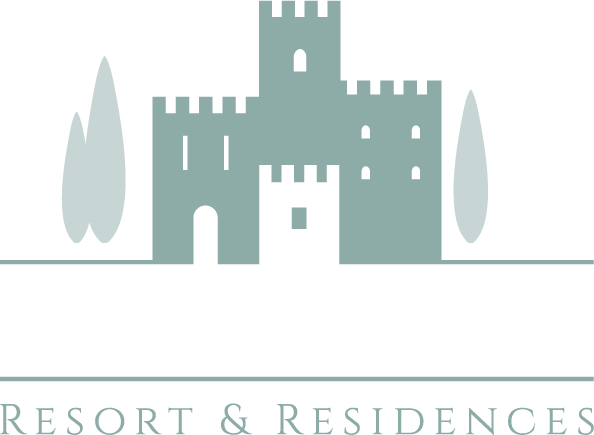Sustainable Living Redefined: Insights from LEED Expert Basak Pekdiker
Thousands of years ago, our ancestors began creating shelters to shield themselves from the dangers of the outside world. Today, the threat of lurking predators has diminished, and we find ourselves protected by four walls and modern amenities. But what if the structures meant to protect us are no longer sustainable and can actually harm our health and the planet? And what can we do to once again turn our shelter into shields to not only protect but also enhance the environment, our bodies, and our minds?
We turned to Basak Pekdiker to find an answer. With university degrees in Sustainable Architecture and Building Environmental Analysis and Modelling, Basak is a LEED (Leadership in Energy and Environmental Design) accredited professional and expert in designing buildings that offer much more than just roofs over our heads.
At Antognolla, Basak leads the design teams and consultants working on the project with a focus on sustainability and wellbeing. She is responsible for making sure that the Antognolla project meets LEED standards and is in perfect alignment with the sustainability values of Six Senses, the future operator of Antognolla luxury resort.
Q: What are sustainable architecture and design for wellbeing?
A: Sustainable architecture refers to architecture that minimises the use of energy and resources during the entire lifespan of buildings, while it simultaneously contributes to the well-being of people and the environment on both a local and global scale. Achieving this is no easy task and requires an extensive number of disciplines to be involved in a project right from the beginning in an integrative design process.
A separate concept, design for wellbeing, primarily means supporting the health and wellbeing of a building’s occupants and the surrounding community in terms of physical, mental, and emotional dimensions. We can describe it as an architecture that provides healthy spaces while promoting healthy habits.
Q: What do these concepts look like in practice at Antognolla?
A: Everything we aim for in terms of sustainability and wellbeing is already here and has been deeply rooted in the DNA of Antognolla for centuries. We are implementing this tradition in the project in many ways, by combining it with innovation and 21st century technology. An example concerns designing and operating the building in a way that promotes healthy habits. This includes anything between growing organic food on the property and providing healthy menus, to promoting movement and physical activity. Finally, assuring high
indoor quality by choosing materials without chemical contaminants such as VOCs (volatile organic compounds) and providing proper air filters and ventilation rates.
Another key feature of the project is its high performance in rainwater management. Water is often referred to as ‘blue gold’ in Italy, and we are well aware of its value. We will be collecting rainwater from the roofs and external areas to store it in our already existing network of artificial lakes. Only collected rainwater will be used in irrigation, as Antognolla Golf has already been doing for years. Additionally, we are using native vegetation that requires far less water and promotes the health and stability of the local ecosystem. Other features include but are not limited to energy efficiency and the selection of natural, toxic-free, and low carbon materials, activities which are all aligned with the values of Six Senses.
Q: What are some of the key wellness activities at Antognolla that guests can look forward to?
A: The project will have an inviting and relaxing Spa with a wide range of amenities and treatments – all accompanied by spectacular views of the surrounding nature and the Castle. Additionally, and among other features, there will be the herb and spice garden and many trails on the property for various adventures and activities, from mountain biking and walking to outdoor yoga, foraging, and picnics as part of the Six Senses offering. The 600 hectare estate already has forests, olive trees, and vineyards, and is connected to a network of natural parks. If someone wants to escape from the chaotic world of the city, Antognolla is the best place to relax and reconnect with nature.
Q: Have you noticed significant changes in people’s perceptions of sustainability and well-being over the past decade?
A: There is an important increase in people’s awareness of the negative impacts of our conventional lifestyles on the planet and on our own lives. This is likely due to our direct experiences with the changes in the local climate and environmental pollution, as well as increased global awareness thanks to access to information. For instance, once we read that the amount of microplastics entering our bodies each week is equal to the size of a credit card, we’ll want to avoid plastics. Likewise, once we learn about the toxic chemicals in agri- culture, we’ll want to consume more organic food.
I think we are witnessing an environmental renaissance where we are trying to find a harmonious way of existing on Earth. We now know that we cannot be healthy on an unhealthy planet, and that its health depends on us. The road is long, but we are making progress.
Q: What is your understanding of the term la dolce vita in the context of sustainability?
A: La dolce vita is a life lived well. Even if we are in the most beautiful places and doing the most pleasurable things, we cannot live well unless we are in a state of physical, emotional, mental, and spiritual wellbeing. For me, the state of this holistic wellbeing is what makes life ‘sweet’. So, I can say that wellbeing is a precondition for la dolce vita.
